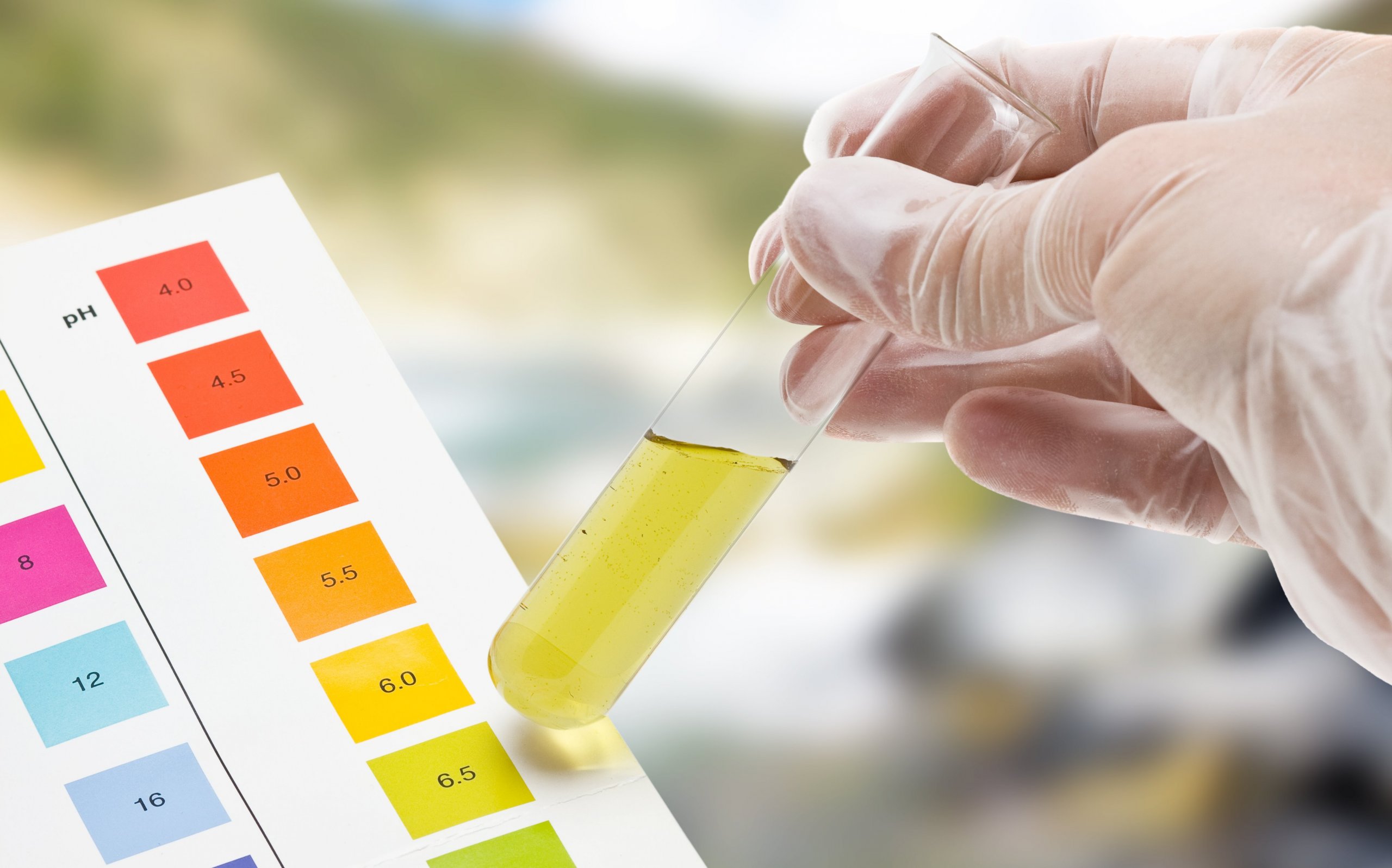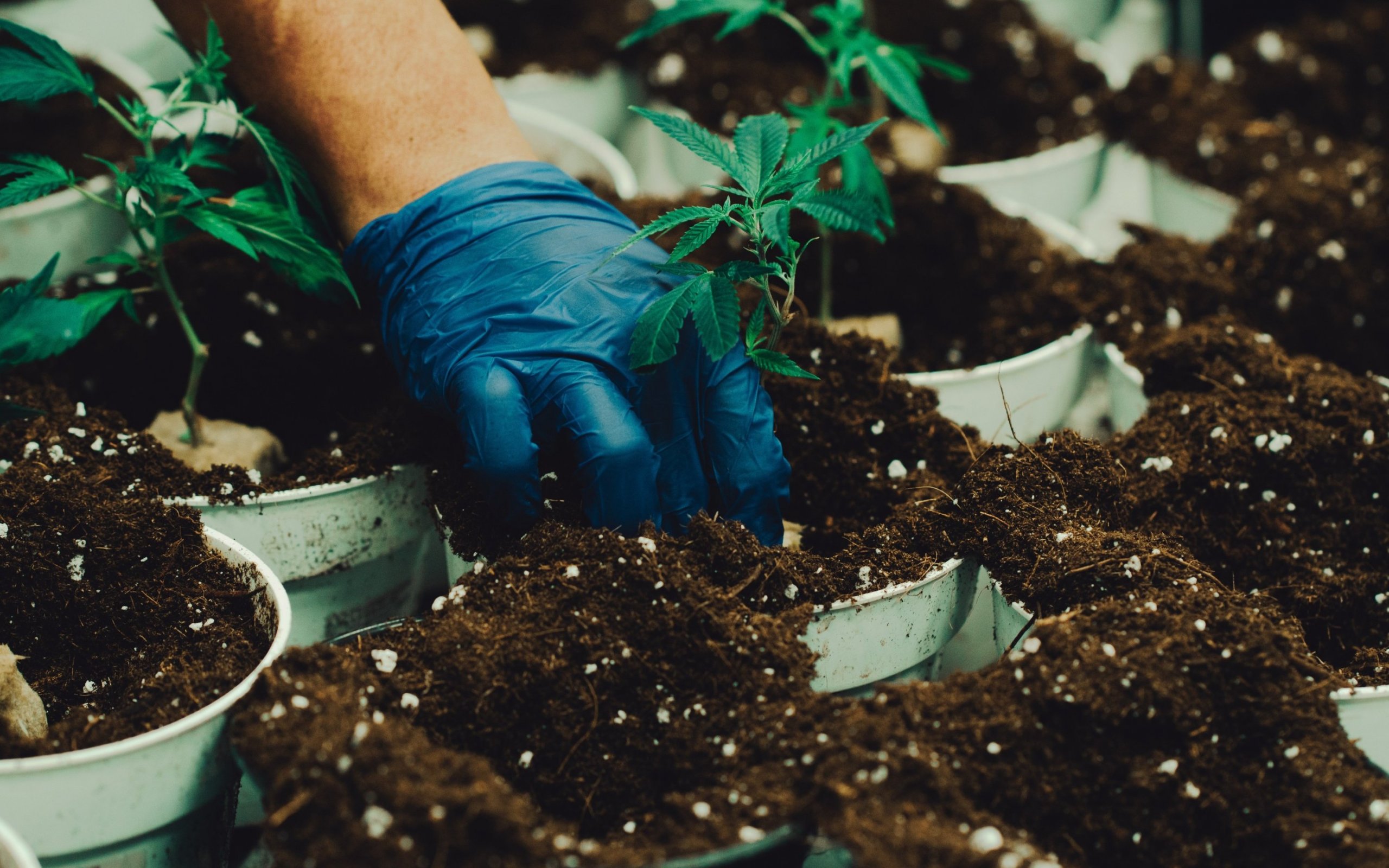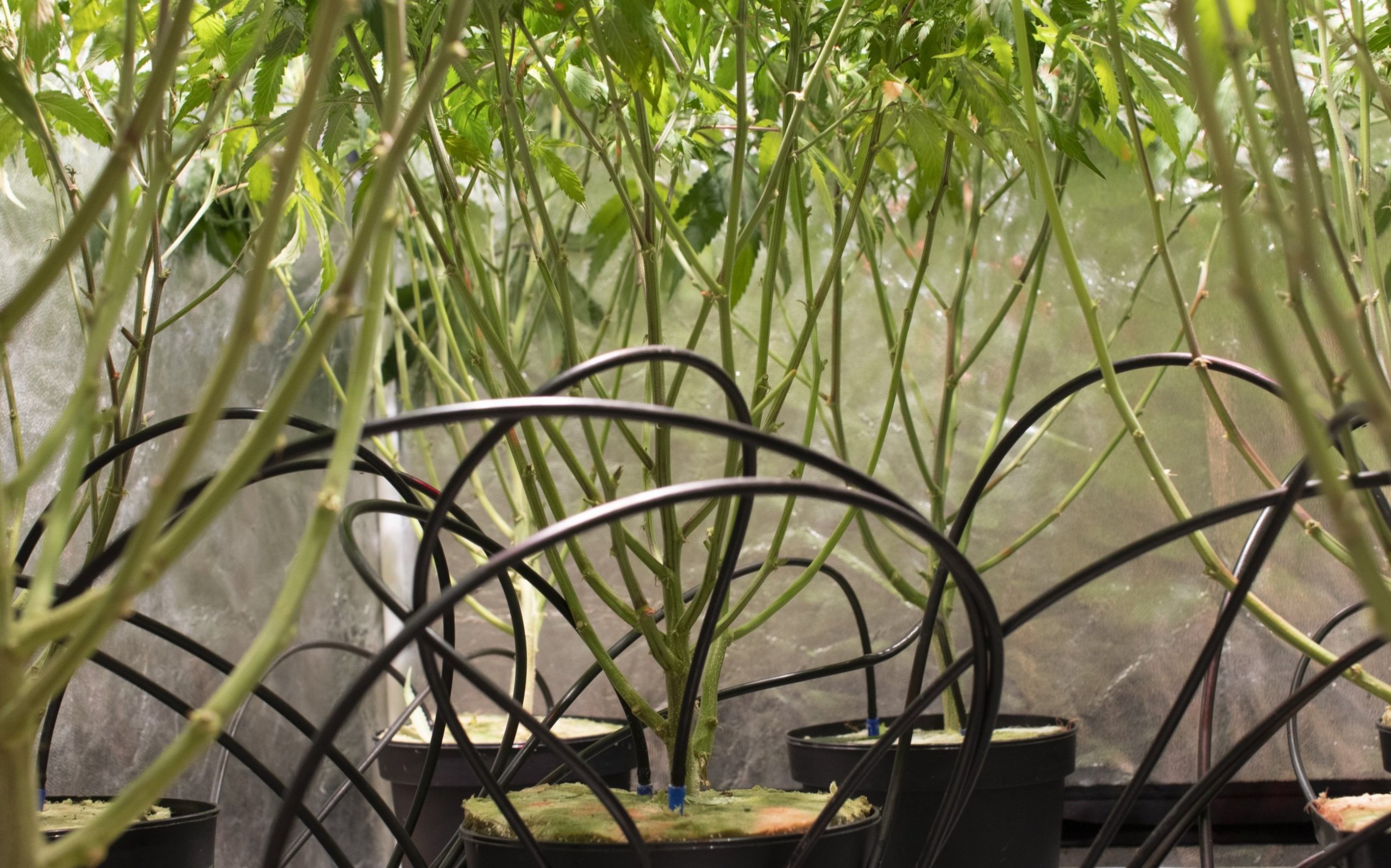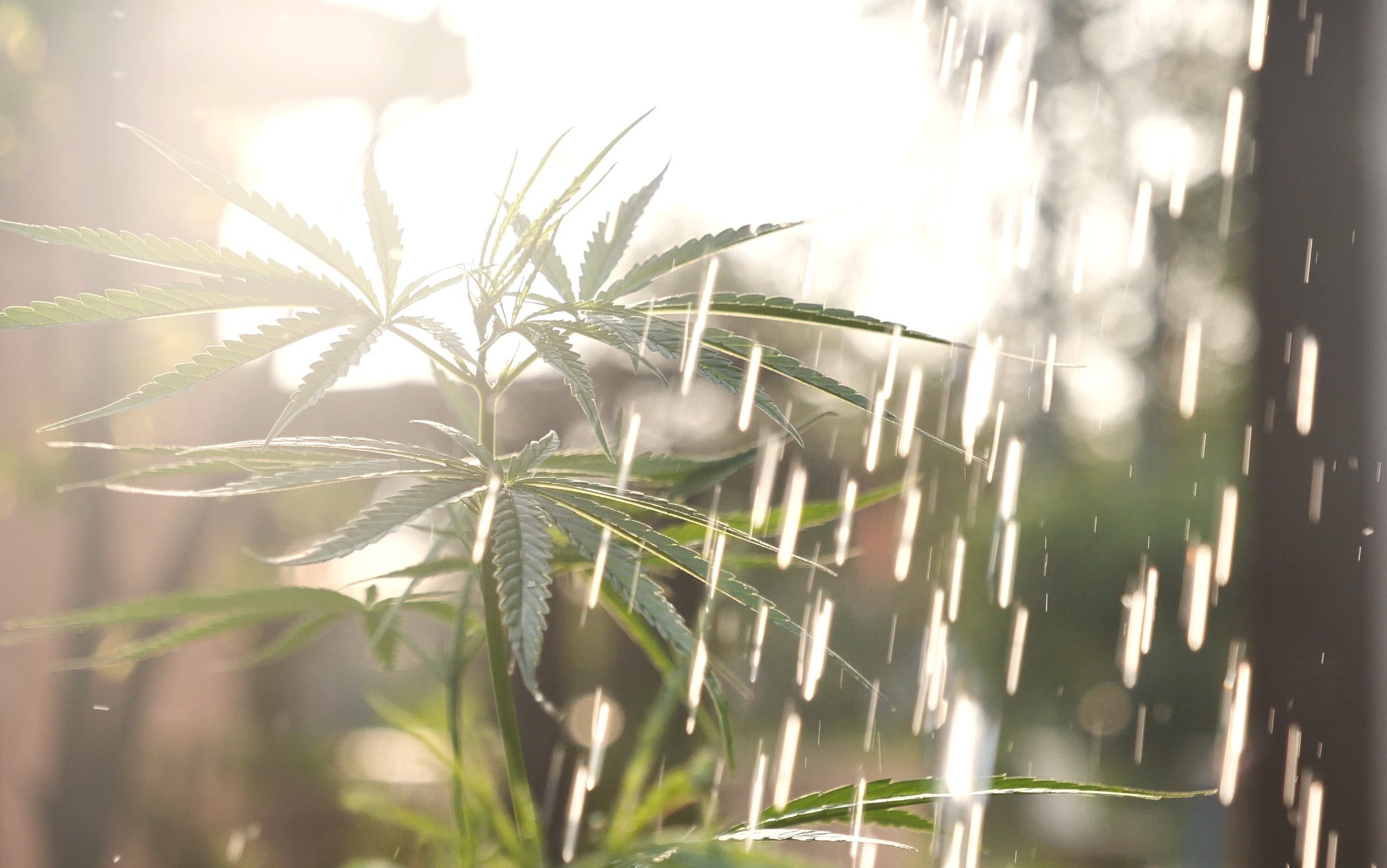How To Fix a Silicon Deficiency In Cannabis Plants
Growing marijuana gives many gardeners a sense of satisfaction. However, it's not enjoyable when problems arise, such as a silicon deficiency that threatens your harvest. Usually, silicon is found naturally in soil, but that's only if the earth you have available is still rich in nutrients.
Silicon is a micronutrient, and even though it's not strictly necessary for growth, it does benefit the plants in other ways. The often forgotten compound helps crops tolerate droughts and delays wilting. It also helps plump up the cannabis bushes flowers, which most certainly every grower wants.
We explore the ins and outs of silicon deficiency, how to spot the lack of the nutrient, and how to ensure your plants have what they need.
What is silicon deficiency?
A silicon deficiency is a shortage or lack of this mineral in plants. Even though this phenomenon is rare, it can cause havoc with the health of cannabis plants. Silicon is abundant in most fertilizers and soils, so a deficiency would mean that the medium the crops are sitting in is barren of the substance.
It's more common with indoor setups that use soil-less mediums for establishing crops. Marijuana growers that raise plants in hydroponics may come across this issue.
Check our report on "silica for cannabis" to learn more about it!
What does silicon do for plants?
Silicon (Si) is a nutrient found in plants that's non-essential. The nute permeates into the plant as silicic acid. It's then deposited in the cell walls as amorphous silica. The compound provides a supporting role for various functions of the crop, so a silicon deficiency can hamper the plant’s development in many ways.
It helps strengthen the stems and cell walls of the bushes and can significantly slow down wilting. Plants under stress benefit from the presence of silicon, especially during droughts. It also improves the crop's resistance to various pathogens and other metal toxicities such as copper, iron, or zinc.
One of the most important functions that silicon does is that it stimulates the process of photosynthesis. Cannabis growers need to ensure their plants don’t suffer from a silicon deficiency if they want large yields with an abundance of flowers.
What causes cannabis silicon deficiency?
A lack of silicon is very rare, especially if the crops grow outdoors in soil. Growers cultivating indoors need to watch the levels, especially if they're using non-soil methods.
Some causes of silicon deficiency include:
Incorrect water PH levels
The recommended water pH for cannabis is 7 or as close to that as possible. If the pH level is way above or below, it severely hampers the plants' ability to absorb water and important nutrients. Silicon absorbs best through the roots.

Quantity of water
The amount of water supplied to the plant needs to be at the right level. Too little or too much moisture decreases the plant's ability to absorb nutrients, resulting in, amongst others, a silicon deficiency.
Lack of silicon in grow setup
Certain indoor grow setups don't use soil, so the grower needs to ensure the plant gets what it needs artificially. Hydroponics is one example of a system that often causes crops to suffer from a silicon deficiency. Cultivators need to ensure that the plants' base has a good balance of essential vitamins and minerals.
Silicon deficiency symptoms in weed plants
Silicon deficiency symptoms in marijuana plants start with a visual clue. Usually, there’s discoloration of the foliage, but there could be other signs. Each part of the plant gets affected differently—we explore what to look for when the plant has a silicon deficiency.
Leaves
Leaves are the first telltale sign that your plants have a nutrient problem. One of the main benefits of silicon is that it makes the crops drought resistant. Insufficient silicon means the leaves aren't able to regulate the transpiration rate.
When cannabis plants lose large amounts of water, it leads to foliage discoloration and eventual drying. The leaves may also curl on the edge or droop.

Roots
A silicon deficiency in plants also affects below the surface. The anomalies on the roots aren't easy to identify, but if you take a close look, you'll see that they aren't well developed or robust.
Abnormal plant growth
When a silicon shortage is present, you'll notice that your plant's growth is stunted. It's noticeable when compared to crops that have enough of the nutrient.
Plants with enough silicon develop larger and better quality flowers. The stems are also sturdier, and the bushes are more resilient to heat and drought conditions. When you notice these aren’t apparent, you could be facing a silicon deficiency.
How to fix silicon deficiency in marijuana plants
Depending on how you’re growing your crops, there are some methods you can use to help fix silicon deficiency in plants.
Silicon deficiency in soil
Usually, Mother Nature provides the perfect balance of nutrients in soil that helps plants grow and thrive. Unfortunately, some people don't have access to healthy soil, which may cause a silicon deficiency when they start growing cannabis.

Heavily farmed soil that's converted into a marijuana plantation setup also often lacks nutes. To combat the lack of silicon in soil, growers can add diatomaceous earth to their crops. They can also supplement silicate salts or treat them with liquid silicon.
There are specialized plant foods available on the market designed for weed growing. However, these only contain trace levels of silicon, and not all manufacturers keep to scientific standards. Check the label of any new fertilizer to ensure that it contains this often missed micronutrient.
Fixing silicon deficiency in hydroponic setups
The majority of silicon deficiencies occur in hydroponic setups. It's challenging for growers who use this system to ensure the correct amount of cannabis nutrients. You can introduce silicon using various methods, the most common of which are listed below.

Sodium silicate
The best way to fix silicon deficiency in hydroponics setups is to add sodium silicate. It's a water-soluble substance that's also referred to as "liquid glass." When used in this form of silicon, the plant can absorb the nutrient through its roots.
Use this with care in hydroponic systems as they tend to be slightly acidic. The silication ions in the mixture can go through a chemical reaction with other ions, which eventually forms solid silica gel. This situation isn’t ideal if the plant hasn't had a chance to absorb it yet, and it won't help solve the silicon deficiency.
Silicon polymerization is useful, but only when it happens in the cell walls. It creates a protective layer of gel. However, if this happens before the plant absorbs it, it becomes a problem by collecting on the surface. To avoid problems when adding liquid glass in hydroponics, apply in small doses every second or third day.
Potassium silicate
This compound is an alternative to sodium silicate and can help combat silicon deficiency in plants. It typically contains around 7.8% silicon and 3.7% potassium. It works best when used with fertilizer.
Since potassium silicate is highly alkaline, growers who add it to their mixes need to monitor the pH levels. Most cultivators aim for pH levels between 5.5 and 6.5, so they'll need to compensate for the high levels of alkalinity of potassium silicate.
Foliar sprays
Since many hydroponically cultivated plants suffer from silicon deficiency, using foliar sprays is ideal for stabilizing the nutrient. Growers often assume that plants get everything they need through the roots, but this isn't the case with silicon. Using a spray replenishes the levels of silicon quickly and reduces the risk of polymerization.
It's important to note that this isn’t a long-term solution. Since the plants can't move the silicon from the surface of the leaves to all the branches and stems, growers still need to supplement the roots.
Different symptoms and solutions
Check out the following table to see how to solve the main signs of a silicon deficiency depending on the symptom.
| Symptom | Solution |
| Curling or drooping leaves | Treat directly with a foliar spray |
| Weak root system | Use a sodium silicate solution to add to the grow mix |
| Stunted growth | Add sodium silicate or potassium silicate solution to fertilizer |
What is silicon toxicity in cannabis?
Most often, growers are wary of too few minerals and try to avoid issues such as a silicon deficiency. However, the other side of the coin is excess nutrients, resulting in cannabis nutrient burn or toxicity.
Marijuana plants require several macro and micronutrients to develop into healthy crops. If there's an unbalance of the levels of compounds within the plants, it causes havoc for the growing process.
A silicon deficiency in plants is extremely rare but possible—as is silicon toxicity. You'll notice visual symptoms such as withering or discolored leaves, but there’ll also be other signs which aren't as clear. If you suspect that your plants are suffering from an overload of silicon or any other nutrient, you need to act fast to fix it.
How to treat cannabis silicon toxicity?
The quickest way to reestablish a nutrient balance is by flushing the cannabis plants. It's a crucial step to fix any overload of minerals. This process involves removing the nutrients from the grow medium. It's straightforward, and all you need to do is flush your plants with pH-balanced water.

You can use tap water, but it's best to leave it to stand out for a day or two to allow the chlorine to evaporate. Alternatively, flushing solutions are available in stores that can help you detox your plants quickly. This process should lower any excess nutrients, allowing you to start reintroducing them again slowly.
Silicon: the underestimated micronutrient
Cultivating healthy marijuana crops is a wonderful experience but comes with its challenges. Silicon deficiency is one such issue that, although rare in outdoors crops, sometimes occurs with indoor hydroponic setups. Even though the nutrient isn't essential for growth, it makes the plants healthier with more abundant flower production.
If you notice silicon deficiency symptoms, you can use various methods to remedy the situation, such as adding sodium silicate or foliar sprays. Don’t overdo it, though, as you might face the opposite: silicon toxicity. Most modern fertilizers and plant foods contain trace amounts of silicon to give your crops what they need.
If you're a keen grower and like to keep up to date with news on growing cannabis, then follow us on Facebook or YouTube. We share tips and advice to make your next crop a successful one. Take a look; you're bound to learn something new.
About the author: Derek LaRose
Also known as Kronic from The Cannabis Kronicles, Derek LaRose is a young ambitious cultivator and a staple educator for indoor cultivation.